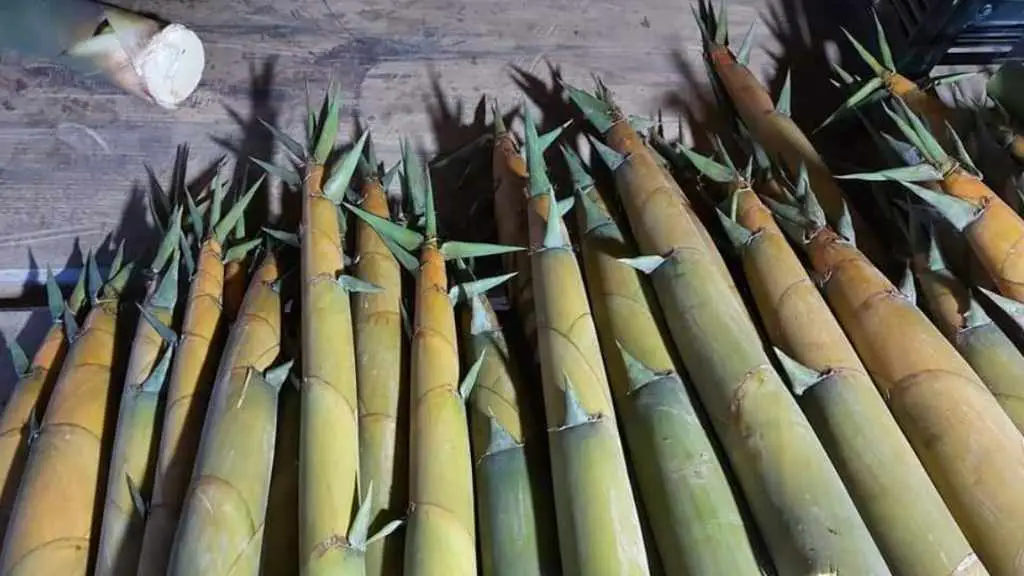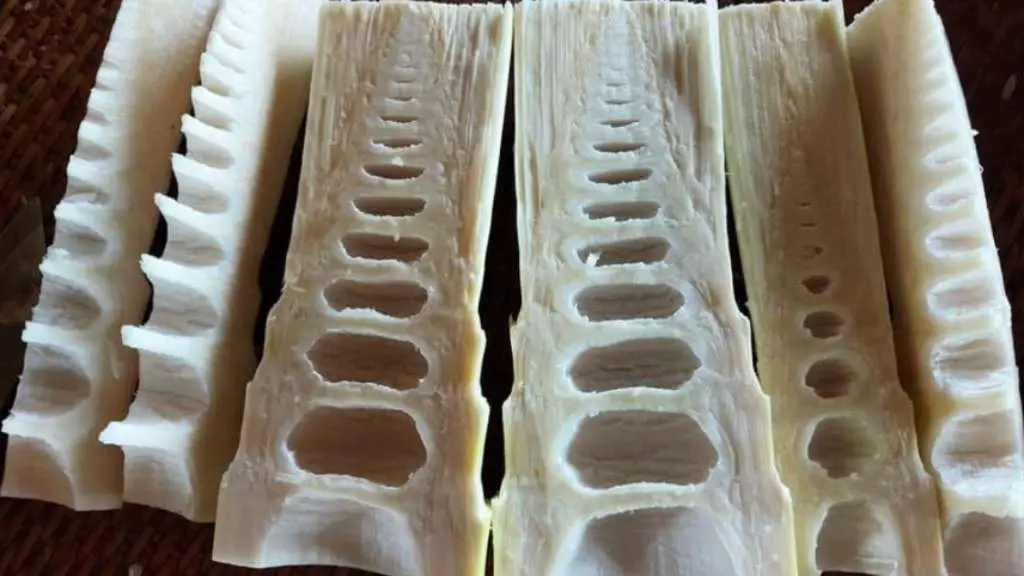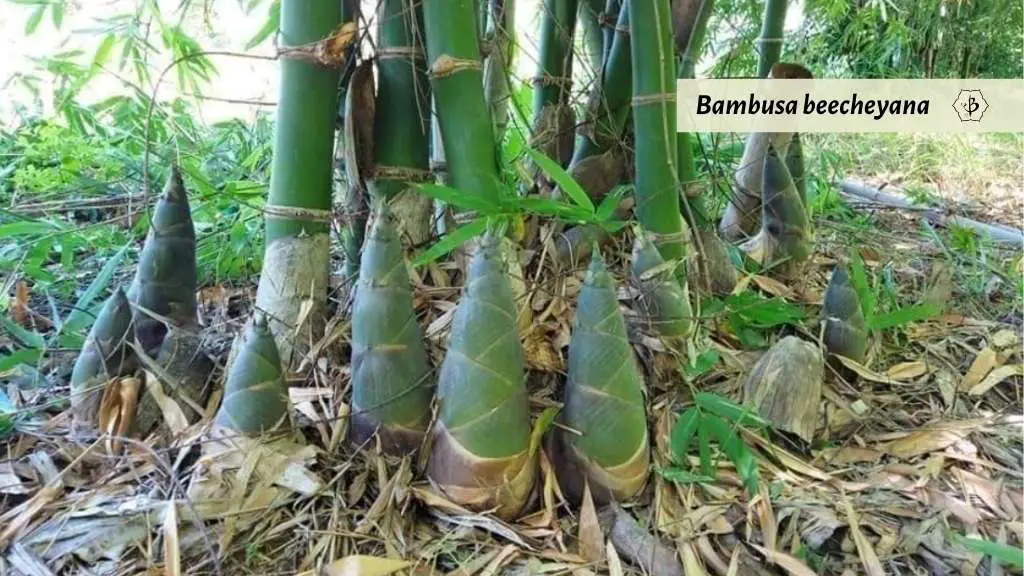When it comes to farming bamboo, one of the first questions you encounter is which species to grow. For every climate, there can be a handful or a boatload of species to choose from. Of course, the answer will depend largely on what you want to do with the bamboo. If you’re growing bamboo in the tropics or subtropics, and you want to produce edible shoots, Bambusa beecheyana might be your best choice.
Bambusa beecheyana is a subtropical, clumping bamboo species native to southern China and Vietnam, also growing in Taiwan and Myanmar. This medium-sized bamboo grows 30 to 40 feet tall in its native habitat. It is considered especially important for its large and appetizing shoots, which the plants produce in profusion. Many commercial bamboo shoot producers in Southeast Asia rely on this species.
This article is part of an ongoing series about different species and cultivars of bamboo. To learn more, check out some of these other detailed articles.
- BAMBOO SPECIES GUIDE
- A gallery of bamboo species
- Black Bamboo: Phyllostachys nigra and others
- Buddha’s Belly Bamboo
- Chimonobambusa quadrangularis: Square Bamboo
- Golden Bamboo: Phyllostachys aurea and others
- Hiroshima Bamboo
- Pseudosasa amabilis: Tonkin Bamboo
- Purple Bamboo: An online phenomenon
Characteristics of Bambusa beecheyana
Like all members of the genus Bambusa, B. beecheyana is a clumping bamboo variety, native to Asia and partial to the tropic and subtropical climates. In their native habitat, culms grow 30 to 40 feet high and about 4 inches in diameter. Culms are upright and straight, with many lateral branches, but generally free of thorns.

This species probably originated in southern China or Indochina, i.e. Vietnam, but today it’s fairly widespread in Southeast Asia, including Laos, Thailand and Myanmar. The plants thrive in full sun and are not frost-tolerant. They are cold-hardy down to about 25º F. Compared to most subtropical varieties, Bambusa beecheyana is somewhat drought-tolerant. I’ve also seen this species growing well in Portugal, at the Bambu Parque (see photo above), which indicates some degree of cold hardiness.
A note on bamboo nomenclature
Across Southeast Asia, the local languages have different names for their bamboo species. It’s hard enough to identify bamboo with rigid, Western taxonomy, but when we try to reconcile that system with traditional cultures of the East, the names can get confusing.
In Lao, they call refer to Bambusa beecheyana as “Kim Sung“. In Thailand, they recognize two varieties of beecheyana, one with thorns and one without. It’s not clear what the genetic relationship is between these two strains.
We’ve encountered similar challenges before, with Vietnamese bamboo species like “Tre Gai” and “Tam Vong”. Most identify these as Bambusa blumeana and Dendrocalamus strictus, respectively. But the consensus is far from unanimous.
Bambusa beecheyana for shoot production
The most remarkable characteristic of this bamboo species is its bounty of edible shoots. Not only does B. beecheyana produce what many consider the best-tasting bamboo shoots. But the size and quantity of these shoots are also formidable.

Bamboo shoots have a long history in the culture and cuisine of the Far East. They are a cheap and readily available source of protein and nutrition. The shoots can be boiled and added to soups and stir fry, or you can ferment them like kimchi or sauerkraut.

Many farmers in Vietnam, Laos and Thailand cultivate B. beecheyana specifically for its generous and delicious yield of tender shoots. As it remains a small cottage industry, the vast majority of these bamboo shoots are eaten locally and not exported. In recent years, there has been some interest in turning these shoots into bamboo flour, a gluten-free base for baking crackers and pizza dough.
Cultivation of Bambusa beecheyana outside of Asia
As bamboo cultivation catches on in more parts of the world, far beyond its native habitats, interest in B. beecheyana has grown. Specifically, Florida farmers in the last decade have been taking advantage of the Sunshine State’s subtropical climate to replace the flagging citrus industry with versatile and regenerative bamboo.

Dendrocalamus asper is one of the most popular species of commercial bamboo worldwide, and many have planted it in Florida. And the most profitable market for this bamboo is with shoots. But the occasional frosts have taken a toll on this tropical species. As a subtropical variety, B. beecheyana promises to be a more successful option in the soil of Florida and the Deep South.
Cultivate your knowledge
If you enjoyed reading about Bambusa beecheyana and its high commercial value, you won’t want to miss these other in-depth articles about the fascinating world of bamboo.
NOTE: This article first appeared in October 2022, last updated in January 2024.




















